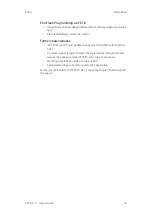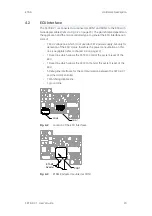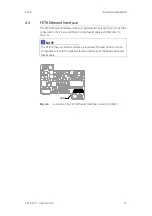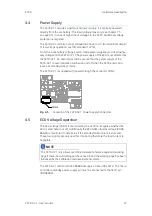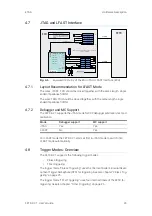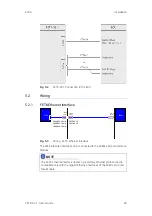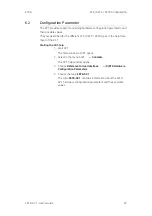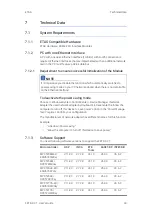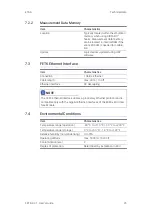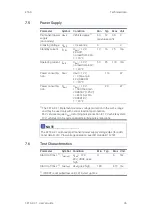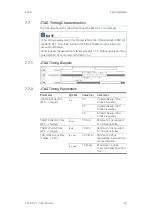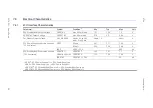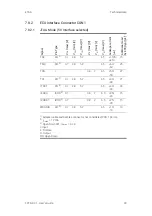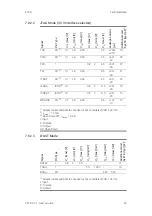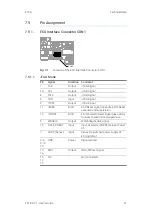
ETAS
Hardware Description
FETK-S2.1 - User’s Guide
26
4.10
Timer Triggering
The trigger mode "Timer Triggering" uses four internal timers of the FETK-S2.1
for triggering. A configurable period is used for triggering.
The time intervals between trigger events are in accordance with the config-
ured timer values. This values and their resolution have to be defined in the
FETK’s configuration and/or A2L file. Available settings are:
• Minimum time interval 100 µs
• Maximum period duration 1 s
• Timer resolution 1 µs
The timers trigger the FETK in an asynchronous manner to the microcontroller
software. Variables assigned to a measurement raster using a timer trigger are
acquired from their original locations in RAM via JTAG.
4.11
Reset
The requirement for the FETK-S2.1 reset mechanism is to ensure that power-
up and power-down behavior of ECU is clean and smooth.
The signals /PORST and /RESETOUT of the microcontroller are used by the
FETK-S2.1 to detect when the ECU is in reset.
The FETK-S2.1 senses the switched ECU power supply. This allows it to detect
when the ECU is off and forward this information to INCA. In addition, it allows
the FETK to enter the power save mode with the calibration system unplugged.
4.12
Pull CalWakeUp until Startup Handshake
The FETK has the ability to wake up the ECU by applying voltage to the Cal-
WakeUp pin of the ECU connector. This allows the FETK to configure a mea-
surement while the ECU is off.
When waking up the ECU via the CalWakeUp pin, it can be configured if the pin
is driven high until the microcontroller core voltage (VDDP) is high or if the pin
should be driven high until the start-up handshake between ECU and FETK is
complete.
NOTE
If variables are measured from ECC protected memories, the ECU software
must ensure the proper initialization of these locations. A time-out period can
be set in the FETK configuration to allow for the ECU to initialize the memo-
ries before the measurement begins.







